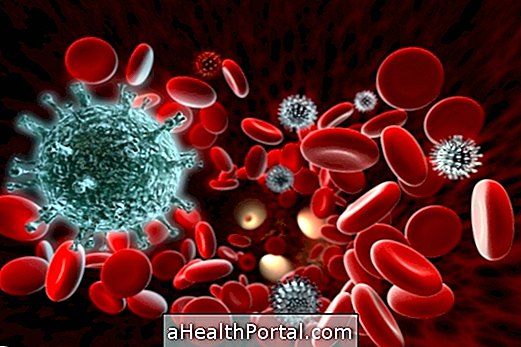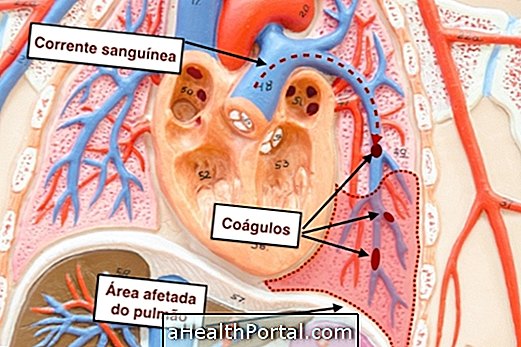HTLV, also called human T-cell lymphotropic virus, is a virus of the Retroviridae family, which in most cases causes no disease or symptoms and therefore has no treatment but prevention and follow-up by the physician .
There are two types of HTLV, HTLV 1 and 2, which can be differentiated through a small part of their structure and of the cells they attack, in which HTLV-1 attacks CD4-like lymphocytes, whereas HTLV-2 attacks CD8-like lymphocytes.
This virus can be transmitted from person to person through unprotected sex or through the sharing of disposable materials such as needles and syringes.

Main symptoms
Most people with HTLV virus do not have symptoms, and this virus is found in routine exams, for example. However, although not frequent, some people infected with HTLV-1 virus have symptoms that vary according to the disease caused by the virus, and there may be neurological or hematological symptoms, such as:
- In the case of tropical spastic paraparesis, symptoms caused by HTLV-1 are slow to appear, but are characterized by neurological symptoms that may result in difficulty walking or limb movement, muscle spasms and balance difficulties, for example.
- In the case of T-cell leukemia, the symptoms of HTLV-1 infection are haematological, the main ones being high fever, cold sweat, weight loss without an apparent cause, anemia, the appearance of purple spots on the skin and low blood platelet concentration, for example.
In addition, HTLV-1 virus infection may be associated with other diseases, such as polyomyositis, polyarthritis, uveitis, and dermatitis, for example, depending on how the person's immune system is and where the infection occurs. The HTLV-2 virus to date is not associated with any type of infection, however, it can cause symptoms similar to those caused by HTLV-1 virus.
Transmission of this virus occurs mainly through unprotected sexual intercourse, but can also happen through blood transfusion, sharing of contaminated products, or from mother to child through breastfeeding or during childbirth. Thus, people who have early-onset and active sexual life, who have sexually transmitted inflammatory diseases, or who require or perform multiple transfusions, are at increased risk of being infected or transmitting the HTLV virus.
How is the treatment done?
Treatment for HTLV virus infection is still not well established because of the virus's low probability of causing disease and consequently symptoms. In the case where the HTLV-1 virus causes paraparesis, physiotherapy may be recommended to maintain limb mobility and stimulate muscle strength, as well as medications that control muscle spasms and relieve pain.
In the case of T-cell leukemia, the indicated treatment may be chemotherapy followed by bone marrow transplantation, for example.
As there is no treatment, it is important that people who have been diagnosed with the HTLV virus are monitored periodically through tests to verify the reproductive capacity of the virus and the chances of transmission.
Although there is no targeted treatment for the HTLV virus, rapid diagnosis of the infection is important so that the treatment is started quickly, as the chances of cure increase as treatment can be established according to the symptoms.
How to avoid HTLV infection
The prevention of HTLV infection can be done through the use of condoms in sexual relationships, the absence of sharing of disposable materials such as syringes and needles. In addition, the person carrying the HTLV virus can not donate blood or organs and, if the woman carries the virus, breast-feeding is contraindicated because the virus can be transmitted to the child. In such cases, the use of infant formula is recommended.
Diagnosis of HTLV
The diagnosis of HTLV virus is made by serological and molecular means. The ELISA test is usually performed and, if so, the confirmation is done by the Western blot method. False negative results are rare because the method used for virus detection is very sensitive and specific.
In order to make a diagnosis of the presence of this virus in the body, usually a small sample of blood is collected from the person, which is sent to the laboratory, where tests will be done to identify antibodies produced by the body against this virus.
Are HTLV and HIV the same?
HTLV and HIV viruses, although they attack the body's white cells, lymphocytes, are not the same thing. The HTLV virus and HIV have in common the fact that they are retroviruses and have the same form of transmission, however the HTLV virus is not capable of transforming into HIV virus or causing AIDS. Learn more about the HIV virus.

























